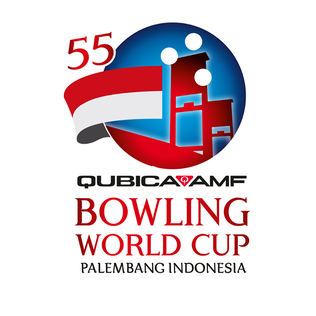
Nordic combined is a winter sport in which athletes compete in cross-country skiing and ski jumping. The Nordic combined at the Winter Olympics has been held since the first ever Winter Olympics in 1924, while the FIS Nordic Combined World Cup has been held since 1983. Many Nordic combined competitions use the Gundersen method, where placement in the ski jumping segment results in time (dis)advantages added to the contestant's total in the cross-country skiing segment.

Hannelore (Hanni) Wenzel is a retired Liechtensteiner alpine ski racer. Weirather is a former Olympic, World Cup, and world champion. She won Liechtenstein's first-ever Olympic medal at the 1976 Winter Olympics in Innsbruck, Austria, and its first two Olympic gold medals four years later in Lake Placid, New York.

The FIS Alpine Ski World Cup is the top international circuit of alpine skiing competitions, launched in 1966 by a group of ski racing friends and experts which included French journalist Serge Lang and the alpine ski team directors from France and the USA. It was soon backed by International Ski Federation president Marc Hodler during the FIS Alpine World Ski Championships 1966 at Portillo, Chile, and became an official FIS event in the spring of 1967 after the FIS Congress at Beirut, Lebanon.

Downhill is a form of alpine skiing competition. Whereas the other alpine skiing events emphasize turning and technique, downhill emphasizes "the six components of technique, courage, speed, risk, physical condition and judgement", according to the FIS "International Ski Competition Rules (ICR)". Speeds of up to 130 km/h (81 mph) are common in international competition. Athletes must have an aerodynamically efficient tuck position to minimize drag and increase speed.
A heptathlon is a track and field combined events contest made up of seven events. The name derives from the Greek επτά and ἄθλος. A competitor in a heptathlon is referred to as a heptathlete.

Giant slalom (GS) is an alpine skiing and alpine snowboarding competitive discipline. It involves racing between sets of poles ("gates") spaced at a greater distance from each other than in slalom but less than in Super-G.

Football at the Summer Olympics, also referred to as the Olympic Football Tournament, has been included in every Summer Olympic Games as a men's competition sport, except 1896 and 1932. Women's football was added to the official program at the Atlanta 1996 Games.

The FIS Nordic World Ski Championships is a biennial Nordic skiing event organized by the International Ski Federation (FIS). The World Championships was started in 1925 for men and opened for women's participation in 1954. World Championship events include Nordic skiing's three disciplines: cross-country skiing, ski jumping, and Nordic combined. From 1924 to 1939, the World Championships were held every year, including the Winter Olympics. After World War II, the World Championships were held every four years from 1950 to 1982. Since 1985, the World Championships have been held in odd-numbered years.
Combined is an event in alpine ski racing. The event format has changed within the last 30 years. A traditional combined competition is a two-day event consisting of one run of downhill and two runs of slalom; each discipline takes place on a separate day. The winner is the skier with the fastest aggregate time. Until the 1990s, a complicated point system was used to determine placings in the combined event. Since then, a modified version, called either a "super combined" or an "Alpine combined", has been run as an aggregate time event consisting of two runs: first, a one-run speed event and then only one run of slalom, with both portions held on the same day.
The 39th World Cup season began in October 2004 in Sölden, Austria, and concluded in March 2005 at the World Cup finals in Lenzerheide, Switzerland. The overall winners were Bode Miller of the U.S. and Anja Pärson of Sweden.
The 22nd World Cup season began in November 1987 in Italy and concluded in March 1988 in Austria. The overall champions were Pirmin Zurbriggen and Michela Figini, both of Switzerland. Zurbriggen won his third overall title; Figini her second.
The 21st World Cup season began in August 1986 in Argentina for men, resumed in late November, and concluded in March 1987 in Sarajevo. The overall champions were Pirmin Zurbriggen and Maria Walliser, both of Switzerland, who each won for the second time. Two-time women's overall World Cup champion Erika Hess of Switzerland retired at the end of the season.
The 19th World Cup season began in December 1984 in Italy and concluded in March 1985 in the United States. The overall champions were Marc Girardelli of Luxembourg and Michela Figini of Switzerland; both were first-time champions.
The 18th World Cup season began in December 1983 in Kranjska Gora, Yugoslavia, and concluded in March 1984 in Oslo, Norway. The overall champions were Pirmin Zurbriggen and Erika Hess, both of Switzerland.
The 17th season of World Cup competition began in December 1982 in Switzerland and concluded in March 1983 in Japan. For the first time, the overall titles were both won by Americans, Tamara McKinney and Phil Mahre. Mahre won his third consecutive overall World Cup title; McKinney became the first American woman to win the overall title.
The 15th World Cup season began in December 1980 in France and concluded in March 1981 in Switzerland. Phil Mahre became the first American to win an overall title, the first of his three consecutive overall titles. Marie-Theres Nadig of Switzerland won the women's overall title.
The 9th World Cup season began in December 1974 in France and concluded in March 1975 in Italy. Gustav Thöni of Italy would regain the overall title, his fourth overall title in five seasons. Annemarie Moser-Pröll of Austria won the women's overall title, her fifth consecutive.

The QubicaAMF Bowling World Cup, previously known as the International Masters and AMF Bowling World Cup, is an annual Ten-pin bowling championship sponsored by QubicaAMF Worldwide, and the largest in bowling in terms of number of participating nations. Each nation chooses one male and/or one female bowler to represent them in the tournament, and in the majority of cases, this is done by running a qualifying tournament, the winners of which are chosen.

Maria Höfl-Riesch is a former German alpine ski racer. She is a three-time Olympic champion, two-time World champion, an overall World Cup champion and five-time World junior champion.
The 1983–84 FIS Cross-Country World Cup was the 3rd official World Cup season in cross-country skiing for men and women. The World Cup started in Reit im Winkl, West Germany from 9 December 1983 and finished in Murmansk, Soviet Union 25 March 1984. Gunde Svan of Sweden won the combined men's cup and Marja-Liisa Hämäläinen of Finland won the women's.








